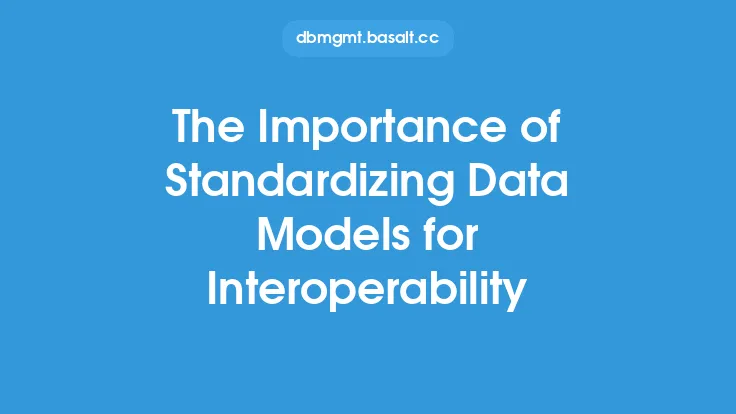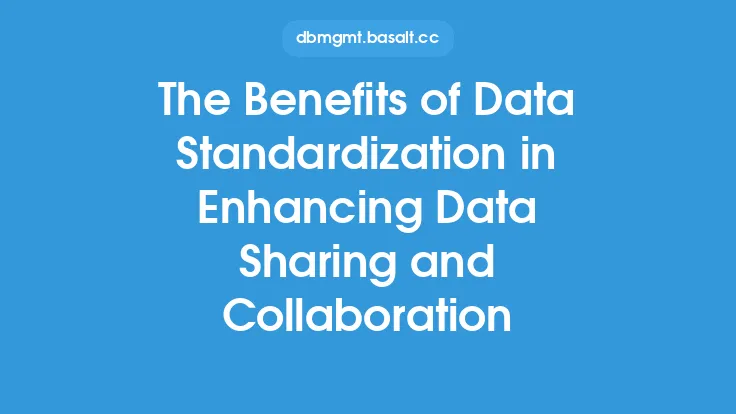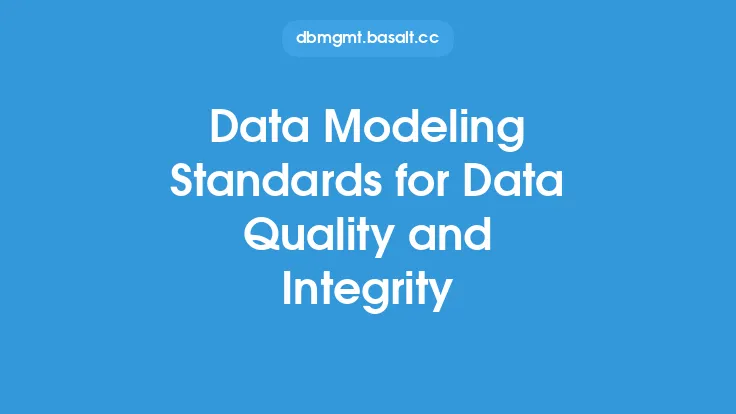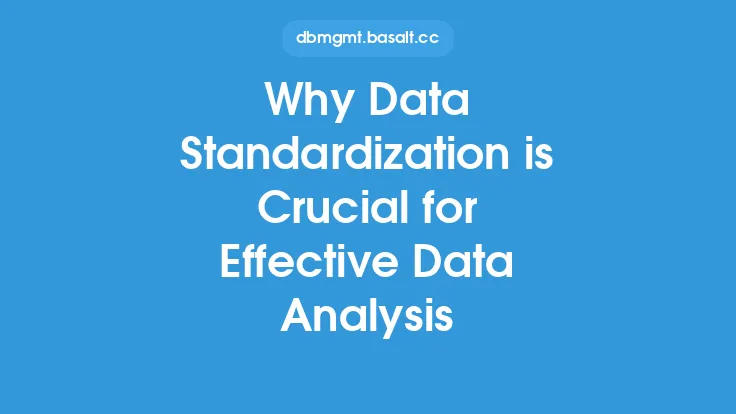The ability to share and collaborate on data is crucial in today's data-driven world. With the increasing amount of data being generated, it is essential to have a standardized approach to data modeling to ensure that data is consistent, accurate, and easily accessible. Standardizing data models is a critical step in achieving improved data sharing and collaboration, as it enables organizations to communicate effectively and make informed decisions.
Introduction to Data Modeling Standards
Data modeling standards provide a common framework for designing, developing, and implementing data models. These standards ensure that data models are consistent, complete, and unambiguous, making it easier for organizations to share and integrate data. Data modeling standards can be applied to various domains, including business, government, and healthcare, and can be used to model different types of data, such as relational, hierarchical, and graph data.
Benefits of Standardizing Data Models
Standardizing data models offers several benefits, including improved data quality, increased data sharing and collaboration, and enhanced data governance. When data models are standardized, it ensures that data is consistent and accurate, reducing errors and inconsistencies. Standardized data models also enable organizations to share data more easily, both within and outside the organization, facilitating collaboration and decision-making. Additionally, standardized data models provide a foundation for data governance, ensuring that data is properly managed, secured, and protected.
Key Components of Data Modeling Standards
Data modeling standards typically consist of several key components, including data model notation, data types, and data relationships. Data model notation refers to the symbols and conventions used to represent data entities, attributes, and relationships. Data types define the format and structure of data, ensuring that data is consistent and accurate. Data relationships define how data entities are connected, enabling organizations to model complex data structures and relationships.
Data Model Notation Standards
Data model notation standards provide a common language for representing data models. These standards ensure that data models are consistent and unambiguous, making it easier for organizations to communicate and share data. Common data model notation standards include Entity-Relationship Diagrams (ERDs), Object-Role Modeling (ORM), and Unified Modeling Language (UML). ERDs are widely used for relational data modeling, while ORM is used for conceptual data modeling. UML is a standardized language for modeling software systems, including data models.
Data Type Standards
Data type standards define the format and structure of data, ensuring that data is consistent and accurate. These standards specify the data types, such as integer, string, and date, and define the rules for data validation and formatting. Common data type standards include ISO/IEC 11404, which defines a standard for generalized data types, and XML Schema, which defines a standard for XML data types.
Data Relationship Standards
Data relationship standards define how data entities are connected, enabling organizations to model complex data structures and relationships. These standards specify the types of relationships, such as one-to-one, one-to-many, and many-to-many, and define the rules for relationship cardinality and optionality. Common data relationship standards include the Object Management Group (OMG) standards for UML and the International Organization for Standardization (ISO) standards for conceptual data modeling.
Implementing Data Modeling Standards
Implementing data modeling standards requires a structured approach, including data model design, data model validation, and data model deployment. Data model design involves creating a data model that conforms to the standardized notation, data types, and data relationships. Data model validation involves checking the data model for consistency, completeness, and accuracy. Data model deployment involves implementing the data model in a database management system or other data storage system.
Tools and Techniques for Data Modeling Standards
Several tools and techniques are available to support data modeling standards, including data modeling software, data validation tools, and data governance frameworks. Data modeling software, such as Entity-Relationship Diagram (ERD) tools and UML tools, provide a graphical interface for designing and validating data models. Data validation tools, such as data profiling and data quality tools, help ensure that data is consistent and accurate. Data governance frameworks, such as data governance policies and procedures, provide a structured approach to managing and governing data.
Best Practices for Data Modeling Standards
Best practices for data modeling standards include establishing a data modeling standard, providing training and support, and continuously monitoring and improving the standard. Establishing a data modeling standard involves defining the notation, data types, and data relationships, and ensuring that the standard is consistent and unambiguous. Providing training and support involves educating data modelers and stakeholders on the standard and providing resources and tools to support its implementation. Continuously monitoring and improving the standard involves regularly reviewing and updating the standard to ensure that it remains relevant and effective.
Conclusion
Standardizing data models is essential for improved data sharing and collaboration. By establishing a common framework for designing, developing, and implementing data models, organizations can ensure that data is consistent, accurate, and easily accessible. Data modeling standards provide a foundation for data governance, enabling organizations to manage and govern data effectively. By following best practices and using tools and techniques, such as data modeling software and data validation tools, organizations can implement data modeling standards and achieve improved data sharing and collaboration.





